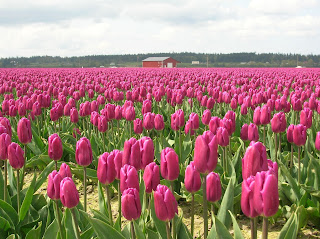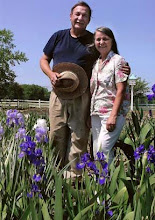We have always embraced the nature of Hunterdon County. This year more than ever (probably because we are outside more than ever) we have seen all kinds of wildlife. From orange-winged orioles to the occasional fox, we get to experience the wonders of Mother Nature beyond the blooming iris, peonies, and other perennials though they sure are nice too.
Just today we came across a running box turtle, (very slowly running, but running nonetheless by turtle standards), a flying gray heron, many many frogs, and a nesting Killdeer.
The Killdeer, which is named for its loud piercing "kill-deer" call, is a rather unusual bird as it is comfortable nesting close to humans and often make nests on the ground. What makes this bird even more interesting is its broken-wing act. When humans or predators come near, the Killdeer will pretend to act injured in an effort to draw the predator away from its nest. Despite the evolutionary genius that has help ensure that its young survive, it is quite funny to watch as it looks something similar to a country line dance by a bar patron who has had a few too many.

Can you find me? The Killdeer remains camouflaged in the overgrown daylily beds. Pardon the weeds, but how would you like it if someone started ripping up your home?

A pretty nice ditch - the water lilies have just started to bloom next to the pot of very old papyrus. In the foreground, Ruffled Velvet Siberian iris comes into bloom.

Rippit! Ribbit! A frog sunbathes on the rock behind some blooming iris laevigata variegata.Creeping Jeremy sneaks up on the frog for an extreme closeup, as it sits on a rock laced with water-loving Creepy Jenny.














 Baby Blessed Dwarf Iris
Baby Blessed Dwarf Iris

 Last week the brothers were able to get together. Jeremy and his lovely bride were able to take some time off and visit with Garrett and his brood in the Pacific Northwest. Among the many adventures they had was a trip about an hour north of Seattle to Skagit County for the
Last week the brothers were able to get together. Jeremy and his lovely bride were able to take some time off and visit with Garrett and his brood in the Pacific Northwest. Among the many adventures they had was a trip about an hour north of Seattle to Skagit County for the 

 They had a three acre display garden to showcase the different variety of tulips they grow. Some picks of the display gardens. They charged an admission fee to see the gardens. We'll have to teach Mom Gulish to juggle or belly dance and then maybe we can charge for
They had a three acre display garden to showcase the different variety of tulips they grow. Some picks of the display gardens. They charged an admission fee to see the gardens. We'll have to teach Mom Gulish to juggle or belly dance and then maybe we can charge for 


















